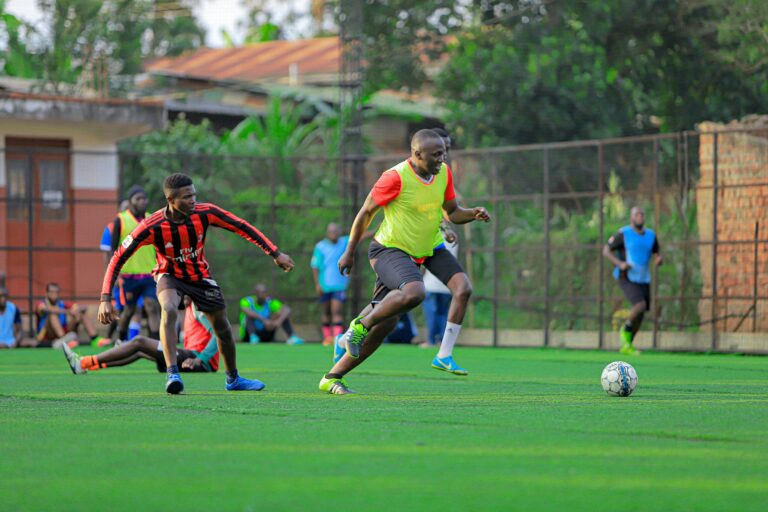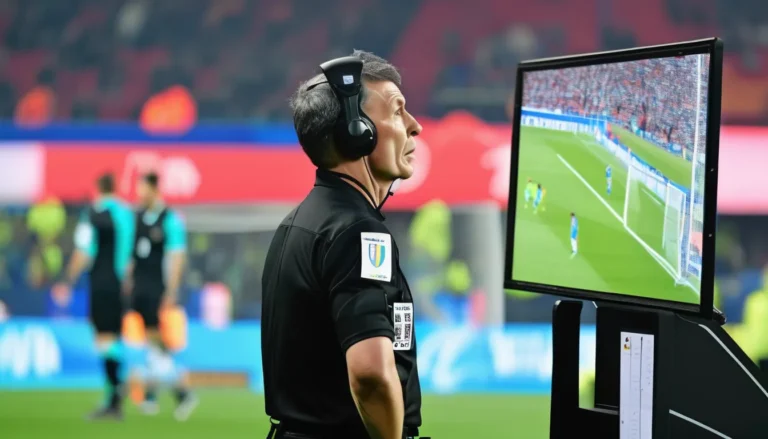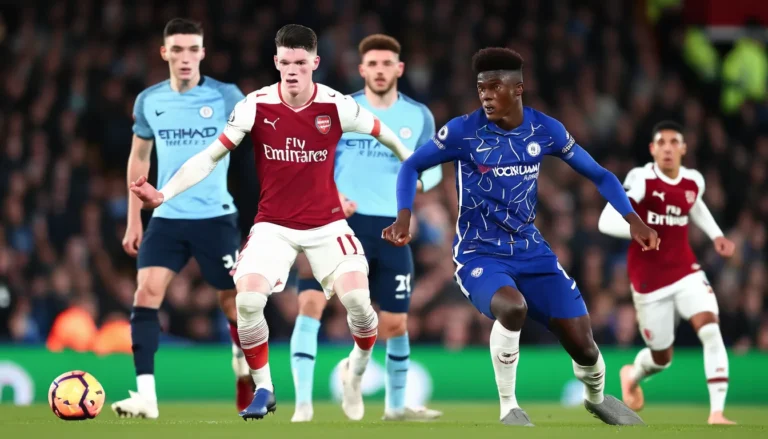What Does CDM Mean In Soccer? Everything About the Role of the Central Defensive Midfielder
If you’ve ever watched a football match and wondered how one player always seems to be in the right place at the right time, cutting out passes, shielding the defense, and dictating the rhythm, you likely were watching a CDM at work. But what does CDM mean in soccer?
CDM stands for Central Defensive Midfielder. It’s a specialized midfield position, typically just in front of the defense. Their main role is to break up opposition attacks, recover possession, and act as the first pivot in building forward play. They may not make the highlight reel often, but ask any coach: no top-tier team functions without one.
We often think of goalscorers and playmakers as game-winners. But behind every dominant performance, there’s usually a CDM quietly dictating space and tempo. From the old unsung ballers of the past to the elite anchors of today, defensive midfielders are the silent creators of every football team’s success.
In our list of the 40 best defensive midfielders in the world, we’ve spotlighted the players redefining the position, those whose intelligence, anticipation, and positional awareness turn chaos into control.
Before we dive into those names, let’s unpack exactly what makes this role so crucial to the modern game.
What Does a CDM Do on a Pitch?
Now that we’ve defined CDM in soccer as a central defensive midfielder, let’s explore what makes the role so demanding and vital. While the title might sound purely defensive, the best CDMs do far more than win tackles or clear danger. They are tactical anchors that balance defensive duties with transitional play. Their responsibilities typically include:
1. Shielding the Back Line
A CDM’s primary function is to protect the center-backs. This involves intercepting through balls, tracking attacking midfielders, and cutting out counter-attacks before they reach the final third.
2. Breaking Up Play
CDMs disrupt the opposition’s rhythm through clean tackles or smart fouls. Players like Casemiro or João Palhinha excel in reading passing lanes and closing down space before danger develops.
3. Recycling Possession
CDMs often serve as the first outlet after a turnover. They don’t only win the ball; they distribute it with purpose. Think of Sergio Busquets at his peak: always one step ahead, always two touches ahead of the game.
4. Controlling Tempo
A world-class CDM can slow the game down or accelerate it at will. These players dictate how their team breathes, from deep-lying passers like Rodri to combative conductors like Declan Rice.
5. Tactical Flexibility
In modern systems, CDMs must adapt to pressing traps, drop into a back three, or even support attacking movements. The best are positionally versatile and deeply intelligent.
So when we talk about the best defensive midfielders in the world, we’re not just measuring tackles or interceptions alone. We’re identifying the players who dominate space, tempo, and structure.
The Evolution of the CDM
The role and function of the central defensive midfielder (CDM) have undergone a remarkable transformation over the past few decades. What was once a position defined purely by physicality and defensive grit has become one of modern football’s most intellectually demanding roles.
The Era of the Enforcer
In the 1980s and 1990s, CDMs were often called “destroyers.” Players like Claude Makélélé and Gennaro Gattuso made their mark by breaking up play, tackling relentlessly, and handing the ball off to more creative teammates. Their influence was immense but largely invisible to the stat sheets.
Makélélé, in fact, was so effective at this task that Real Madrid’s post-Galáctico decline was attributed, in part, to letting him go. The position he perfected became known as the “Makélélé role” — a term still used today.
The Rise of the Regista
The 2000s brought a new wave of CDMs, players who could control the game with their passing as much as their positioning. Andrea Pirlo, though not defensively dominant, redefined the deep-lying playmaker. Behind the ball but always directing traffic, he turned the CDM spot into a launchpad for attacks. This duality—part shield, part engine—began to define elite holding midfielders.
Modern Hybrids
Today, CDMs must be hybrids: press-resistant, two-footed, positionally fluid, and tactically literate. The likes of Joshua Kimmich, Rodri, and Aurélien Tchouaméni combine the steel of old-school enforcers with the brain and distribution of a regista.
In high-press systems, CDMs act as escape valves. In possession-dominant setups, they become the metronomes. In counter-attacking sides, they must anticipate chaos and reset it.
What Makes a World-Class CDM in 2025?
In the modern game, the defensive midfielder (CDM) has evolved from a purely destructive role into one of the most tactically intelligent and technically demanding positions on the pitch. In 2025, the best CDMs do far more than shield the backline. They dictate tempo, initiate attacks, and provide structure in transition. So, what exactly sets the world-class ones apart?
1. Tactical Intelligence and Spatial Awareness
Elite CDMs excel at reading the game. They anticipate passing lanes, track runners without the ball, and recognize pressing triggers before they happen. In a world of high-speed transitions, spatial awareness is crucial, and it is not only about winning the ball but also about being in the right position before danger arises.
2. Ball Recovery and Duels
Top-tier CDMs consistently win back possession through clean tackles, interceptions, and second-ball recoveries. Metrics like successful defensive actions per 90 minutes and duel win percentage now matter as much as traditional pass completion rates.
3. Press Resistance
It is essential to be able to receive the ball under pressure, turn, and escape a press. A world-class CDM offers a release valve under pressure, often with a single touch or swivel. Players like Moises Caicedo and Eduardo Camavinga stand out for this reason.
4. Progressive Passing and Line Breaking
Modern CDMs are more than just safety-first passers. They regularly play forward, breaking lines to connect with attacking midfielders or wide players. Progressive passes, key pass involvements, and verticality now define their passing profile, not just short side-to-side distribution.
5. Tactical Versatility
In 2025, systems constantly change. You have back threes, inverted full-backs, and box midfielders. A top CDM needs to adapt on the fly: dropping into a backline to form a temporary back three, stepping higher into a number 8 role, or pulling wide to create overloads. This demands not only physical fitness but also a high football IQ.
6. Leadership and Communication
World-class CDMs act as the spine of the team. They organize pressing shapes, call out danger zones, and communicate constantly with defenders and midfielders. Even without an armband, many function as captains in practice.
7. Positional Discipline
This trait can’t be taught easily. The best CDMs know when not to move. While box-to-box midfielders are applauded for their energy, a disciplined CDM holds shape, delays counters, and balances the structure even when others surge forward.
8. Statistical Consistency
Across 2023–25, the elite in this role repeatedly show up in advanced metrics: top-tier ball recoveries, fewest defensive errors leading to shots, high pass completion under pressure, and influence on xG buildup without scoring themselves. These players often aren’t flashy, but they’re indispensable.
5 Legendary Defensive Midfielders Who Shaped the Role
The defensive midfielder role has evolved, but some iconic players laid the foundation and defined what it means to be a CDM. These legends combined defensive grit with tactical intelligence, setting standards for future generations.
1. Claude Makélélé
Often credited with popularizing the modern CDM role, Makélélé’s influence is so profound that the position is sometimes called the “Makélélé role.” He could read the game, break up attacks, and provide simple, distribute effectively, and it made him a key figure at Chelsea and Real Madrid. His disciplined positioning allowed creative teammates to flourish.
2. Patrick Vieira
A commanding physical presence and vocal leader, Vieira brought power and technique to the defensive midfield. During his peak years at Arsenal, he dominated the midfield with his ability to win tackles and drive forward. His merging of aggression and skill helped redefine the CDM as a box-to-box force capable of impacting both ends of the pitch.
3. Roy Keane
Known for his ferocity and fierce competitiveness, Keane was the heart of Manchester United’s midfield for over a decade. His relentless work ethic and tactical intelligence made him a master at breaking up opposition play and setting the tone for his team. Keane’s ability to influence games emotionally and physically left a lasting legacy.
4. Sergio Busquets
Busquets brought a cerebral approach to the CDM role, emphasizing anticipation and precise positioning over physicality. Integral to Barcelona’s tiki-taka era, his quick decision-making and passing range helped transition defense to attack seamlessly. Busquets demonstrated how a CDM could be the strategic fulcrum of a dominant team.
5. Fernando Redondo
An elegant and technically gifted midfielder, Redondo united defensive responsibility with creativity. His ability to control the tempo and execute flawless tackles made him stand out in the 1990s, particularly at Real Madrid and AC Milan.
These five players excelled individually and transformed how the CDM position is understood and valued across football.
Frequently Asked Questions (FAQ)
Q1: What does CDM mean in soccer?
CDM stands for a central defensive midfielder. This player is positioned just in front of the defense and is responsible for breaking up opposition attacks, maintaining positional discipline, and often initiating their team’s buildup play.
Q2: Is CDM the same as a holding midfielder?
Yes, a holding midfielder is often another name for a CDM. However, not all holding midfielders are purely defensive, as some also contribute to dictating the tempo of the game.
Q3: What are the key responsibilities of a CDM?
A CDM is tasked with shielding the backline, intercepting passes, winning tackles, covering defensive gaps, and distributing the ball safely to more advanced teammates.
Q4: What skills does a good CDM need?
Top CDMs combine tactical awareness, stamina, strength in duels, clean tackling, and intelligent passing. The best also have the vision to switch play and control tempo under pressure.
Q5: Who are some of the best CDMs in history?
Legends like Claude Makélélé, Sergio Busquets, Patrick Vieira, Dunga, and Frank Rijkaard have redefined the role across eras.
Q6: Can a CDM score goals?
While scoring isn’t their main duty, many CDMs contribute with long-range strikes, set-piece headers, or late runs into the box when the opportunity arises.
Q7: How is a CDM different from a CM or CAM?
A CDM sits deepest, closest to the defense. A Central Midfielder (CM) plays a more balanced role, while a Central Attacking Midfielder (CAM) operates closer to the opponent’s goal and focuses more on creating chances.
Q8: What formations use a CDM?
Formations like 4-3-3, 4-2-3-1, and 3-5-2 often rely on one or more CDMs for balance between defense and attack.
Final Thoughts
The role of the Central Defensive Midfielder has evolved from a purely destructive force into one of the most tactically complex positions in modern soccer. A great CDM breaks up play, anticipates it, shapes it, and sometimes even dictates the rhythm of an entire match. As the game has grown more dynamic and systems more intricate, the value of a top-tier CDM has only increased.
Understanding what a CDM does offers deeper insight into how elite teams maintain structure, resist pressure, and transition from defense to attack. They’re not always in the spotlight, but when a team’s midfield collapses, or a counter-attack runs wild, their absence is felt immediately.






